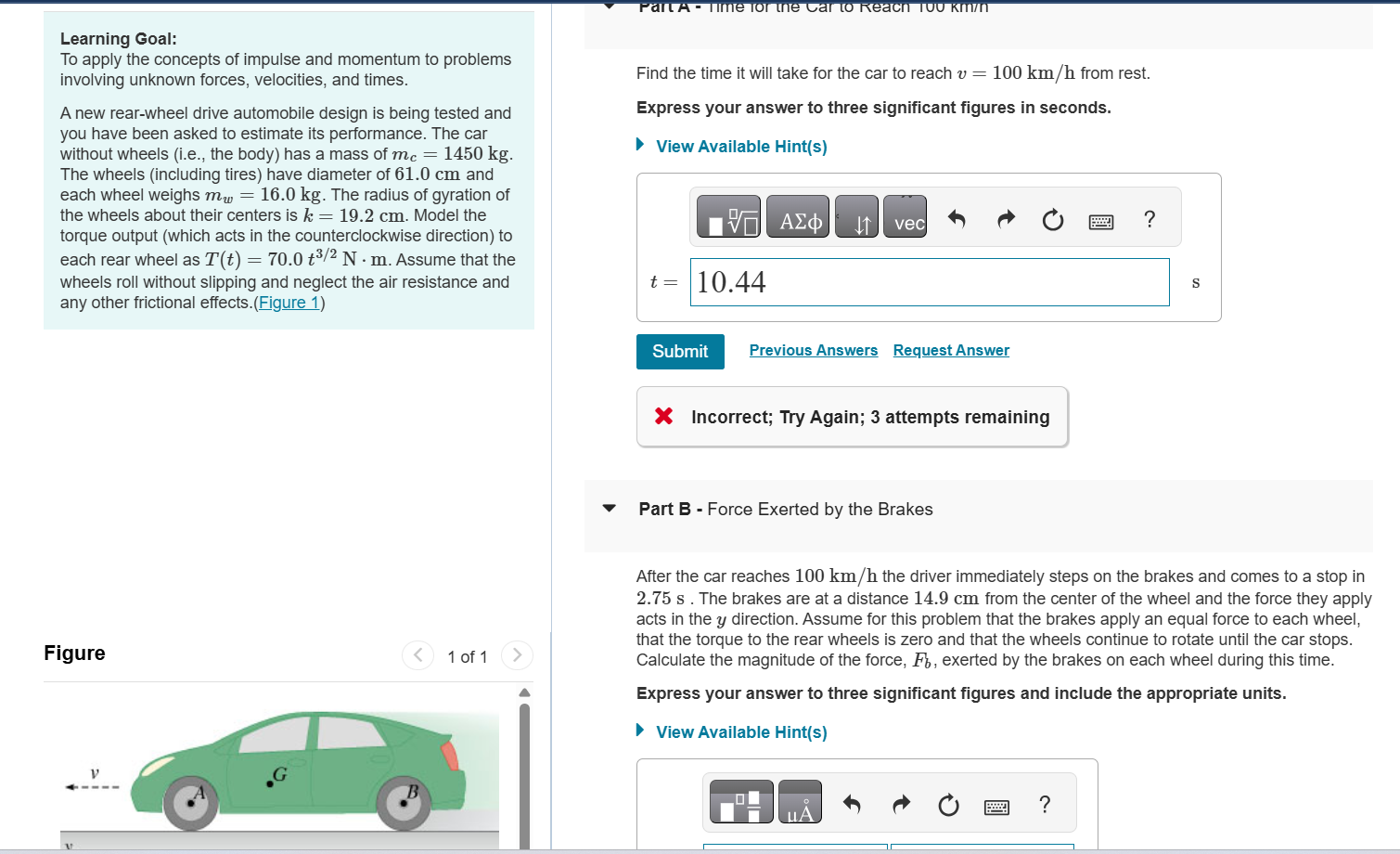(Solved): Learning Goal: To apply the concepts of impulse and momentum to problems involving unknown forces, v ...
Learning Goal: To apply the concepts of impulse and momentum to problems involving unknown forces, velocities, and times. A new rear-wheel drive automobile design is being tested and you have been asked to estimate its performance. The car without wheels (i.e., the body) has a mass of \( m_{c}=1450 \mathrm{~kg} \). The wheels (including tires) have diameter of 61.0 cm and each wheel weighs \( m_{w}=16.0 \mathrm{~kg} \). The radius of gyration of the wheels about their centers is \( k=19.2 \mathrm{~cm} \). Model the torque output (which acts in the counterclockwise direction) to each rear wheel as \( T(t)=70.0 t^{3 / 2} \mathrm{~N} \cdot \mathrm{~m} \). Assume that the wheels roll without slipping and neglect the air resistance and any other frictional effects. (Figure 1) Figure Find the time it will take for the car to reach \( v=100 \mathrm{~km} / \mathrm{h} \) from rest. Express your answer to three significant figures in seconds. View Available Hint(s) \[ t=[ \] X Incorrect; Try Again; 3 attempts remaining Part B - Force Exerted by the Brakes After the car reaches \( 100 \mathrm{~km} / \mathrm{h} \) the driver immediately steps on the brakes and comes to a stop in 2.75 s . The brakes are at a distance 14.9 cm from the center of the wheel and the force they apply acts in the \( y \) direction. Assume for this problem that the brakes apply an equal force to each wheel, that the torque to the rear wheels is zero and that the wheels continue to rotate until the car stops. Calculate the magnitude of the force, \( F_{b} \), exerted by the brakes on each wheel during this time. Express your answer to three significant figures and include the appropriate units. View Available Hint(s)
